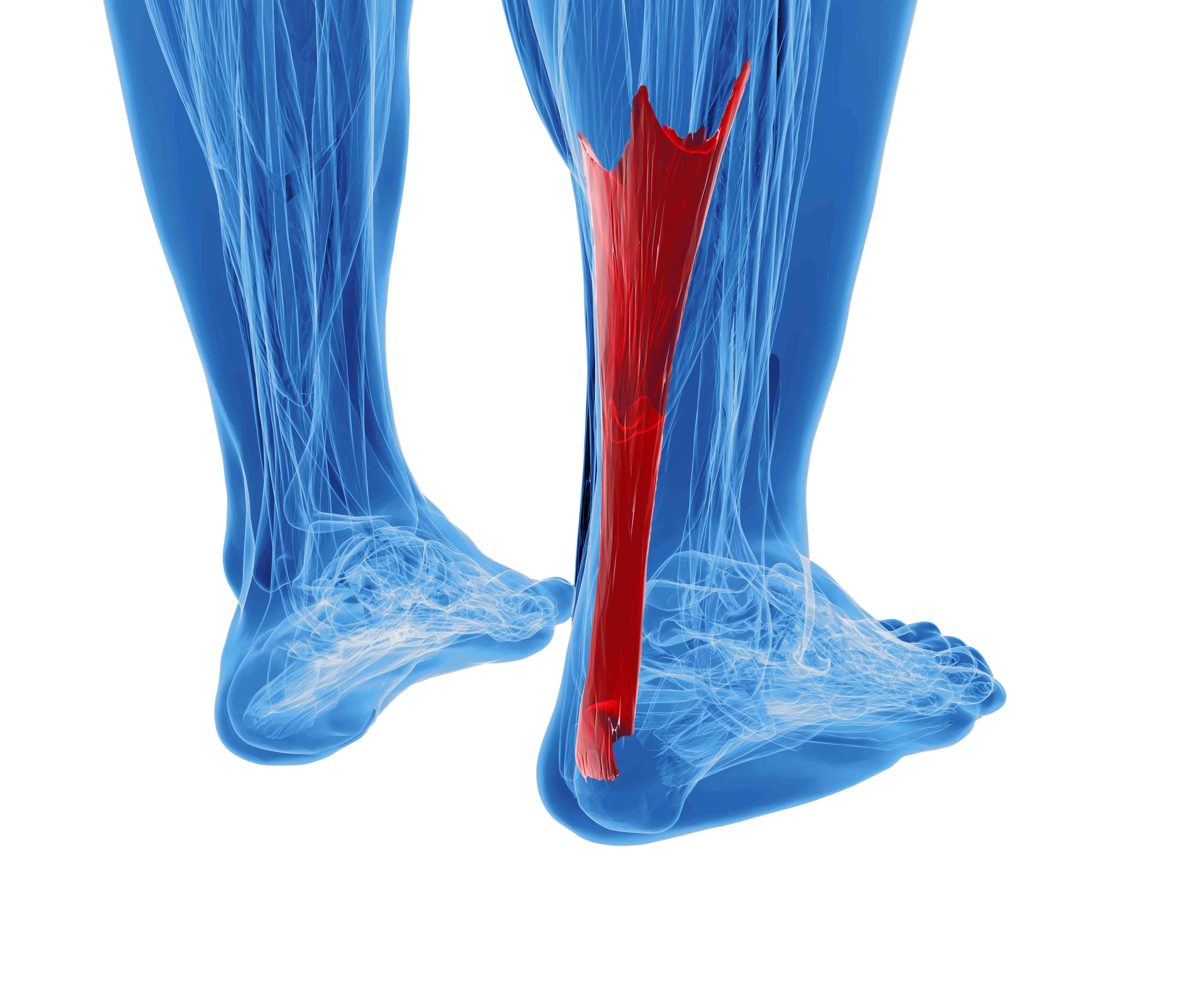Achilles Tendon Suture bridge
What is Achilles Tendonitis?
Achilles tendonitis presents in patients with repetitive use stressors, or trauma, put on the Achilles tendon. Repetitive stress leads to inflammation which leads to eventual buildup of cartilaginous tissue and eventually bony formation. Symptoms include pain in the back of the heel, direct pressure such as wearing shoes causing pain, and a progressive bony growth on the heel bone. There will be a thickening of the Achilles tendon and midline tenderness at the base of the tendon. Do not confuse the Achilles tendon with the peroneal tendon.
Treatment of Achilles Tendonitis
The first line of treatment of Achilles Tendonitis indicates activity modification, shoe modification, and physical therapy. The patient must reduce stressors that lead to inflammation of the tendon and focus on properly supporting the ankle. Physicians avoid using steroids to reduce inflammation for Achilles tendinosis due to increased risk of tendon rupture. Therapy will focus on strengthening the gastrocnemius while lengthening the muscle and gastrocnemius-soleus stretching. If therapy and lifestyle modification fail, then the patient and surgeon will discuss surgical options. One of the surgical options includes a procedure called the Achilles tendon suture bridge. Do not confuse with a posterior tibial tendon repair.
WHAT IS THE ACHILLES tendon SUTURE BRIDGE
The Achilles Suture Bridge specifically repairs Chronic Achilles calcific tendonitis. Inflammation of the Achilles tendon commonly effects many athletes. Usually resolving in 4-6 weeks. However, recurrent over use or injury can cause chronic inflammation to develop a condition known as Achilles tendonitis. If this persists chronic changes within the tendon develop causing, thickness and swelling of the tendon, which can cause secondary changes forming calcium deposits in the tendon or on the heel bone, weakness, pain and even rupture. Surgery is required to correct these changes if conservative treatment fails. A open surgical procedure, the Achilles tendon suture bridge, to remove bone at the heel (pump bump) and inflamed and degenerated tendon. Consideration of the Achilles tendon suture includes over 50% of the tendon being removed, or patient obesity. The surgeon debrides the Achilles tendon, removes bony growth from the ankle bone, and reattaches the tendon with bone anchors and sutures. Additional anchors below the tendon insertion serve as additional attachment points for the sutures holding the tendon in place.
Recovery from an Achilles Tendon Suture Bridge
A boot with a raised heel insert and crutches will be used for two weeks post op. Weight bearing should be minimal and should be avoided if uncomfortable. The patient may remove the heel raise after two weeks and stop using crutches with physician approval. The boot will still need to be worn outside of therapy sessions. After a month consideration of short bouts of walking without a boot may be considered if comfortable. After six weeks the boot will begin to be phased out as comfort allows. At 10 weeks the patient should bear full weight without a boot. Benchmarks will continue in therapy until about 4 months in and most patients fully recover by month 4 to 6.
Suffering from Achilles Tendonitis? Talk to our foot and ankle orthopedic team today! 817-375-5200
F.A.Q.
What is an Achilles Tendon Suture Bridge?
Achilles Tendon Suture Bridge is a surgical technique used to repair and strengthen the Achilles tendon, which is the large tendon at the back of your ankle. It involves creating a bridge-like structure using sutures (stitches) to reattach and reinforce the torn or damaged Achilles tendon. This procedure aims to promote optimal healing and restore the tendon’s strength, allowing patients to regain their mobility and functionality.
Who is a Candidate for Achilles Tendon Suture Bridge Surgery?
Achilles Tendon Suture Bridge surgery is typically recommended for individuals who have suffered from Achilles tendon injuries or ruptures. Candidates for this procedure often include athletes, active individuals, or anyone with a significant Achilles tendon injury. Your orthopedic surgeon will assess your specific condition and recommend Achilles Tendon Suture Bridge if it is deemed the most appropriate treatment option to help you regain strength and mobility in your ankle.
What is the Recovery Process After Achilles Tendon Suture Bridge Surgery?
After undergoing Achilles Tendon Suture Bridge surgery, the recovery process is crucial for a successful outcome. Initially, patients will need to wear a cast or protective boot to immobilize the ankle. Physical therapy and exercises will be prescribed to gradually regain strength and flexibility in the Achilles tendon. The length of recovery varies from patient to patient, but it typically takes several months to achieve full recovery and return to regular activities. Your orthopedic surgeon will provide you with a personalized recovery plan and guidance throughout your healing journey.


